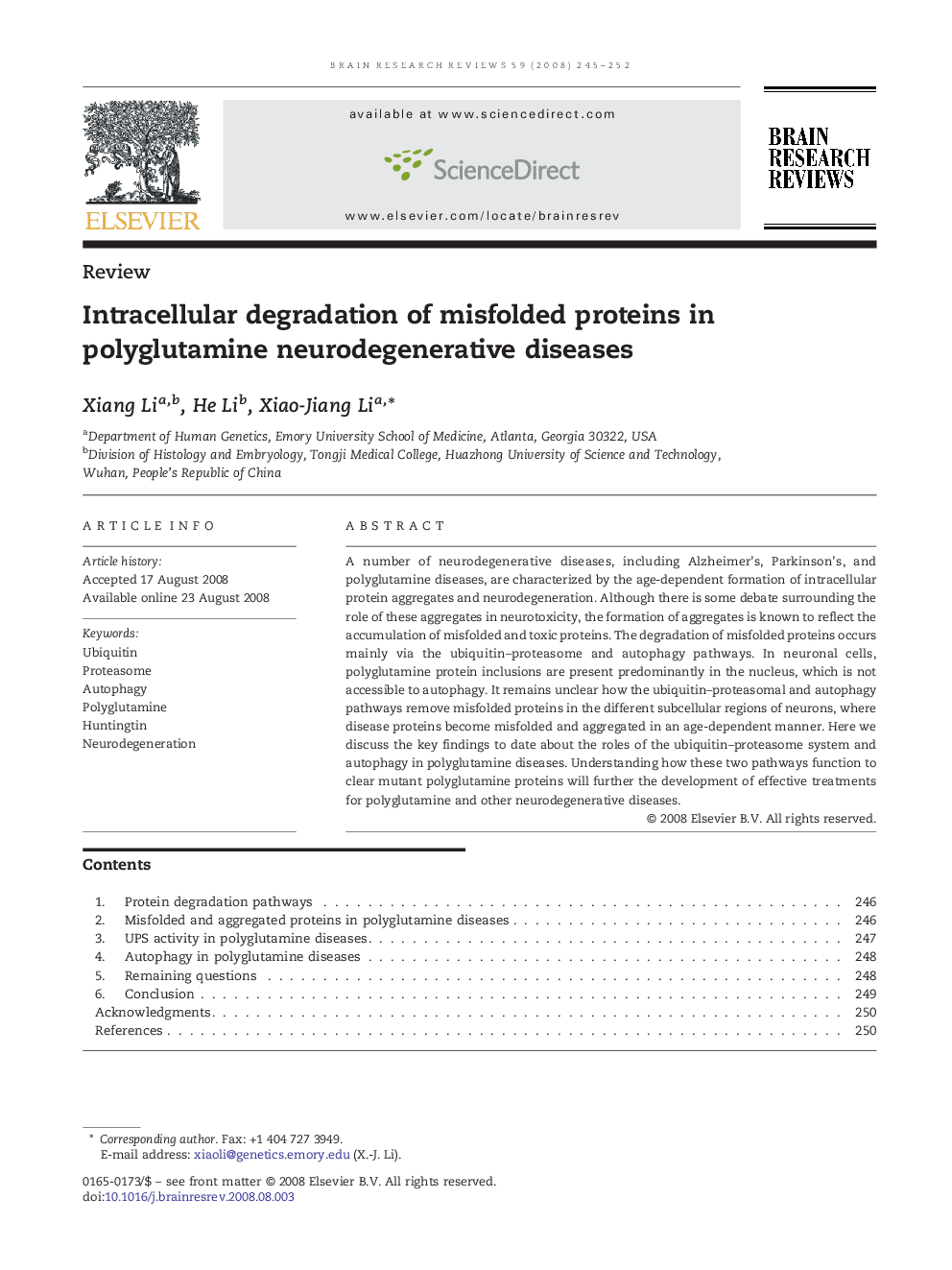| Article ID | Journal | Published Year | Pages | File Type |
|---|---|---|---|---|
| 4333798 | Brain Research Reviews | 2008 | 8 Pages |
A number of neurodegenerative diseases, including Alzheimer's, Parkinson's, and polyglutamine diseases, are characterized by the age-dependent formation of intracellular protein aggregates and neurodegeneration. Although there is some debate surrounding the role of these aggregates in neurotoxicity, the formation of aggregates is known to reflect the accumulation of misfolded and toxic proteins. The degradation of misfolded proteins occurs mainly via the ubiquitin–proteasome and autophagy pathways. In neuronal cells, polyglutamine protein inclusions are present predominantly in the nucleus, which is not accessible to autophagy. It remains unclear how the ubiquitin–proteasomal and autophagy pathways remove misfolded proteins in the different subcellular regions of neurons, where disease proteins become misfolded and aggregated in an age-dependent manner. Here we discuss the key findings to date about the roles of the ubiquitin–proteasome system and autophagy in polyglutamine diseases. Understanding how these two pathways function to clear mutant polyglutamine proteins will further the development of effective treatments for polyglutamine and other neurodegenerative diseases.
